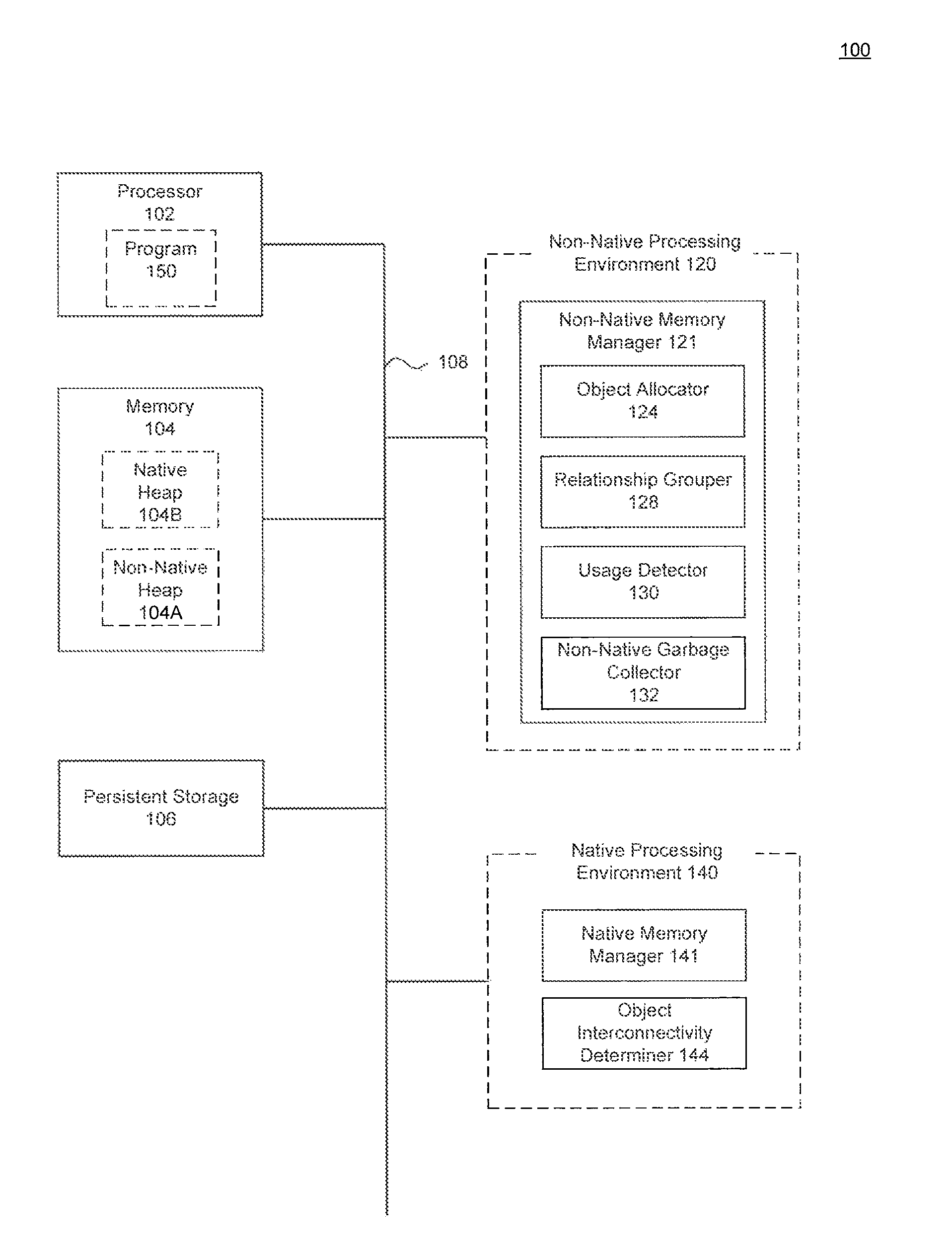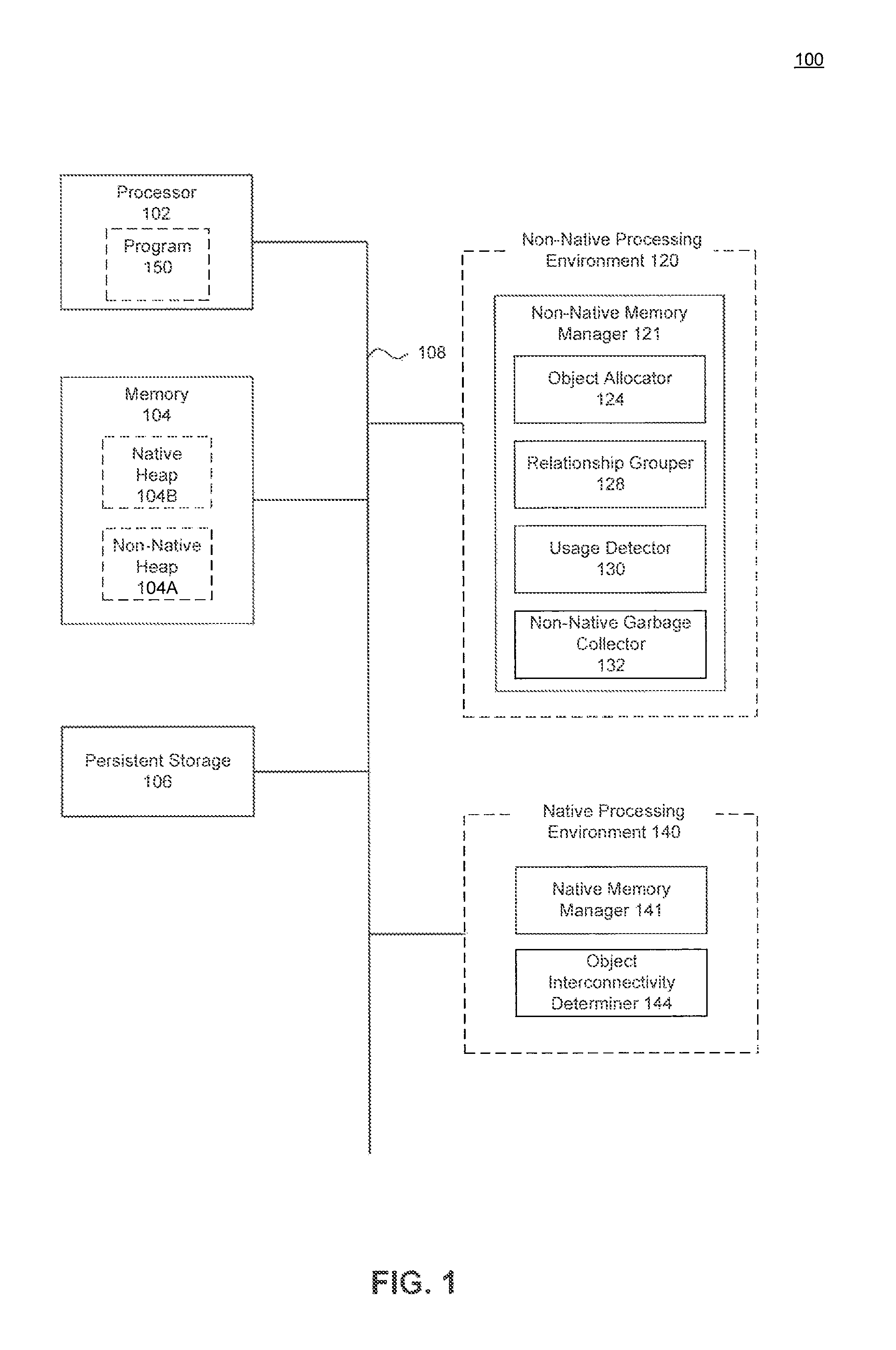Object grouping for garbage collecting
a garbage collection and object technology, applied in the field of objects collecting, can solve the problems of system running out of memory for new objects, unused objects remaining in the heap or other memory portion, and conventional garbage collection schemes cannot effectively determine which objects are to be cleared from the heap
- Summary
- Abstract
- Description
- Claims
- Application Information
AI Technical Summary
Benefits of technology
Problems solved by technology
Method used
Image
Examples
Embodiment Construction
[0007]Methods, systems, and computer program products for memory garbage collection via object grouping are disclosed. Non-native objects are allocated in a non-native memory referencing respective one or more native objects in a native memory. The non-native objects are grouped into non-native object groups based upon information regarding object references associated with respective ones of the native objects. Objects in respective ones of the one or more non-native object groups are provided one or more references to other said objects of the non-native object groups to create connected object groups. Unused ones of the connected object groups are detected. And objects of the detected unused ones of the connected object groups are de-allocated.
[0008]Further features and advantages of the embodiments, as well as the structure and operation of various embodiments thereof, are described in detail below with reference to the accompanying drawings. It is noted that the invention is no...
PUM
 Login to View More
Login to View More Abstract
Description
Claims
Application Information
 Login to View More
Login to View More - R&D
- Intellectual Property
- Life Sciences
- Materials
- Tech Scout
- Unparalleled Data Quality
- Higher Quality Content
- 60% Fewer Hallucinations
Browse by: Latest US Patents, China's latest patents, Technical Efficacy Thesaurus, Application Domain, Technology Topic, Popular Technical Reports.
© 2025 PatSnap. All rights reserved.Legal|Privacy policy|Modern Slavery Act Transparency Statement|Sitemap|About US| Contact US: help@patsnap.com



